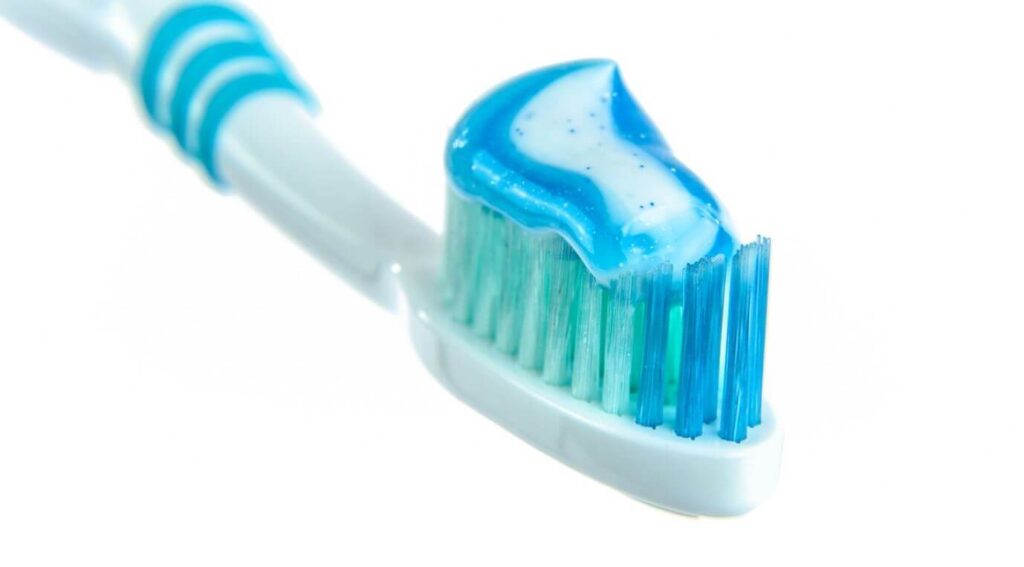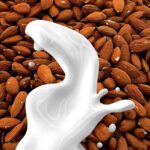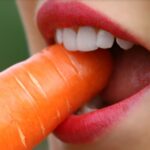This is a statement I heard recently, and it is true that most Westerners do use factory-made tooth paste. US Americans statistically use 20 gallons (75kg!) of tooth paste in their lifetime (Mercola, 2015). Still, I thought,
“By that standard, there are a lot of abnormal people on earth, including myself…”
I remember visiting the Lobi tribe in West Africa, and being fascinated by the way they brushed their teeth. They would break off a twig from a certain kind of tree, chew on one end of it, and then use the broken fibers to rub their teeth clean. I tried it. The tree’s sap tasted pretty good – and it was free.
When I visited India, I noticed that people used charcoal from their fire place to brush their teeth with. I tried that, too. During the brush my teeth looked awful enough to scare people on Halloween. But after rinsing they looked – and felt! – wonderfully clean.
This is no wonder, as charcoal is known to adsorb (not a typo!), that is catch onto its surfaces, a large range of toxins, chemicals, bacteria and fungi.
Once in Germany, my mom picked up “toothsalt” made from sea salts, which you sprinkle on your tooth brush. I have also heard of people using regular table salt to brush with.
In spite of all these experiences, I grew up to be a “normal human being” who used commercial tooth paste from tubes. That is, until one day my mom had a problem with her gums, and asked me to research it.
It was then that I realized that all those unpronounceable names on the list of tooth paste ingredients are far from harmless. Rather, tooth paste is a regular cocktail of chemicals that we “normal human beings” willingly put into our mouths every single day.
Here is a breakdown of the questionable ingredients many popular brands contain:
–sodium lauryl sulfate (SLS), which interferes with taste buds (causing things to taste weird after brushing), has been linked to painful canker sores. SLS was originally used to clean floors (being a foaming agent) and is now actually an insecticide.
–artificial sweeteners such as aspartame (parts of which can travel into your brain and cause headaches, ear buzzing, dizziness, nausea, gastrointestinal disturbances, weakness, vertigo, chills, memory lapses, numbness, and shooting pains in the extremities, behavioral disturbances, and neuritis), or sorbitol (a laxative that can cause diarrhea), or saccharin (a petroleum-based sugar substitute linked to bladder cancer, brain tumors and lymphoma).
–sodium fluoride (a toxic chemical that was exclusively sold as rat poison Prior to 1938. It accumulates in your tissues over time, wreaks havoc with enzymes, and produces a number of serious adverse health effects, including lowered IQ, weakened bones, thyroid suppression, lowered metabolic function, and Alzheimers). Fluoride is meant to harden tooth enamel, but apparently it hardens more things that that (for example, the lenses in your eyes!). No wonder fluoride toothpaste carries the following warning: “Keep out of reach of children under 6 years of age. If you accidentally swallow more than used for brushing, seek professional help or contact a poison control center immediately.” I’m sure you’ve read it before. Please be advised that it’s there for a reason. In fact, a small child can die just from eating half a tube of tooth paste!
–Propylene glycol (a synthetic type of mineral oil that, in the industrial grade, is used in antifreeze, paints, enamels, and airplane de-icers. No wonder it’s known to be a skin, eye, and lung irritant and linked to damage to the central nervous system, liver and heart.)
–Diethanolamine (DEA) – a known hormone disrupter and linked with cancers of the stomach, esophagus, liver, and bladder.
–Carrageenan (linked to gastrointestinal inflammation, ulcers, colon cancer, insulin resistance and glucose intolerance).
–parabens (preservatives that mess up our hormonal system by mimicking estrogen and cause allergies. They can be listed as methylparaben, ethylparaben, propylparaben, butylparaben, benzylparaben, or even parahydroxybenzoate, oxybenzoic acid, oxybenzone, hydroxybenzoic acid, hydroxybenzoate, or PHB-ester.
–triclosan (an antibiotic that is suspected of disrupting hormones and causing cancer, and can be found in the urine – proof that you do absorb tooth paste chemicals into your system! The FDA actually banned this chemical from being used in soap, but as yet it remains in some tooth pastes),
–titanium dioxide (CI 77891) is a whitening agent that is usually said to be harmless. Yet, new studies show that this chemical forms nanoparticles that stay in the body and cause all sorts of problems.
–Microbeads (tiny plastic pellets, which can get trapped under your gums, giving food and bacteria an entrance to your gum line, and so cause gum disease. Alternatively, they go down your drain, through the filters at most wastewater treatment plants, and out into the environment. Plastic microbeads absorb toxins from the water and are eaten by a wide variety of marine life and, ultimately, by humans as well.)
There are quite a few other tooth paste ingredients that are deemed less dangerous (improvements on older recipes), such as trisodium phosphate, or polysorbate 80, or glycerin, or abrasives like hydrated silica, so I didn’t bother listing those. But they are not exactly harmless, either. You may have heard the adage, “If you can’t pronounce the items on the ingredient list, don’t buy the product”. How come no one seems to say this about tooth paste?! We would all be far better off avoiding all these unpronounceable poisons dressed up to look and smell nice.
You may wonder what is the big deal here – tooth paste cleans your teeth and gets spit out again, after all. Yes, but it obviously touches more than just your teeth, and your mouth is actually one of the most absorbent places in your entire body. This is why some medications are administered under the tongue (“sublingually”). So while you’re dutifully brushing, the ingredients in your toothpaste enter your mouth’s membranes and gums, which are the gateway to every system in your body. This means that tooth paste is a very real factor in much systemic disease.
Any truly normal human being will avoid danger once he recognizes it. Advice like, “Just don’t use it every day!” is crazy. I, for one, have stopped using tooth paste altogether, and my teeth have never been better. And no, I don’t suffer from bad breath, either.
There are alternatives to tooth paste, after all.
And those alternatives don’t even require tubes made from plastic #4 (Low-density polyethylene or LDPE), aluminum, or a plastic-aluminum composite. Forgoing tooth paste is even environmentally friendly (not to mention sparing both ground water and oceans from being further contaminated with tooth paste chemicals)!
P.S. Don’t throw away your tooth paste even if you decide to cut it from your oral hygiene regimen. There are other uses for it, such as getting rid of stains.
My favorite use of tooth paste is cleaning silver jewelry. Simply wet the silver item, apply a little toothpaste and rub or brush it in until the paste looks black. Let it sit for about 2 minutes, then wash off and dry. The silver will be as shiny as though it were new.
Sources: (besides my own experience)
Bettini, S., Boutet-Robinet, E., Cartier, C. et al. Food-grade TiO2 impairs intestinal and systemic immune homeostasis, initiates preneoplastic lesions and promotes aberrant crypt development in the rat colon. Sci Rep 7, 40373 (2017). https://doi.org/10.1038/srep40373
Mercola, J.M. (2015). Toxic Toothpaste Ingredients You Need to Avoid. Retrieved on Feb. 7th, 2020 from http://articles.mercola.com/sites/articles/archive/2015/09/09/toxic-toothpaste-ingredients.aspx
Rogler G et al. (2017). Titanium dioxide nanoparticles exacerbate DSS-induced colitis: role of the NLRP3 inflammasome. In Gut, 2017 Jul;66(7):1216-1224. doi: 10.1136/gutjnl-2015-310297.
Saint Louis, C. (Sep. 7h, 2016). Why a Chemical Banned From Soap Is Still in Your Toothpaste. Retrieved on Feb. 10th, 2020 from https://www.nytimes.com/
Walraven, T. (2014). Toothpaste can do more harm than good. Retrieved on Feb. 7th, 2020 from https://www.dentalbuzz.com/
Waugh, D.T. (2019). The Contribution of Fluoride to the Pathogenesis of Eye Diseases: Molecular Mechanisms and Implications for Public Health. Int J Environ Res Public Health. 2019 Mar; 16(5): 856. doi: 10.3390/ijerph16050856. Retrieved on Feb. 7th, 2020 from https://www.ncbi.nlm.nih.gov/



